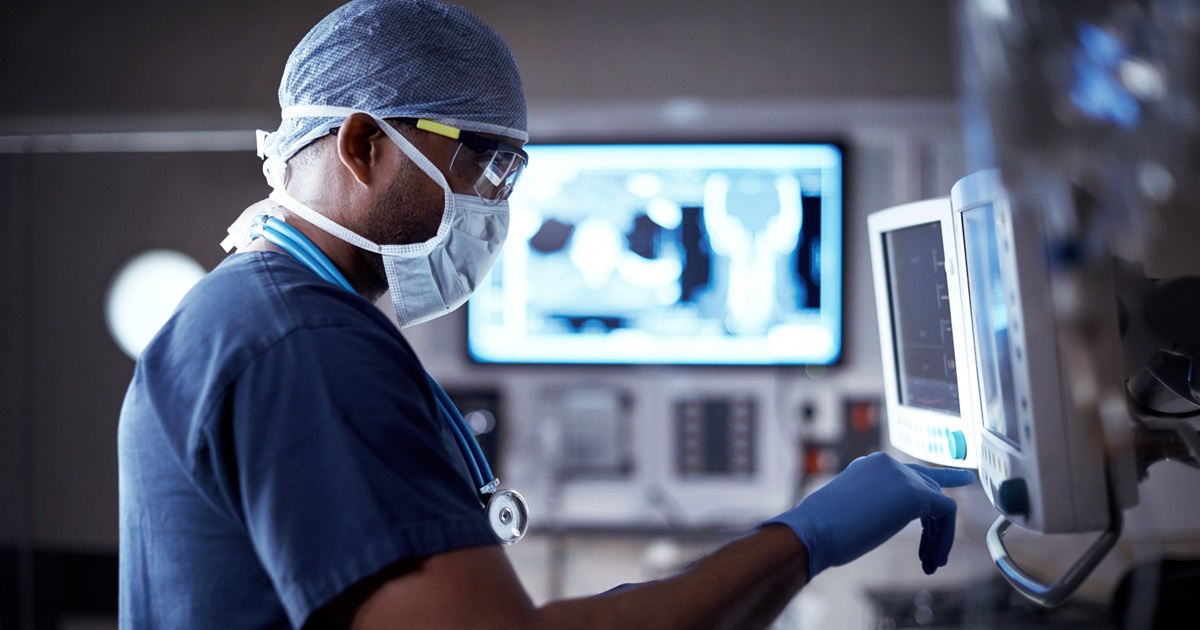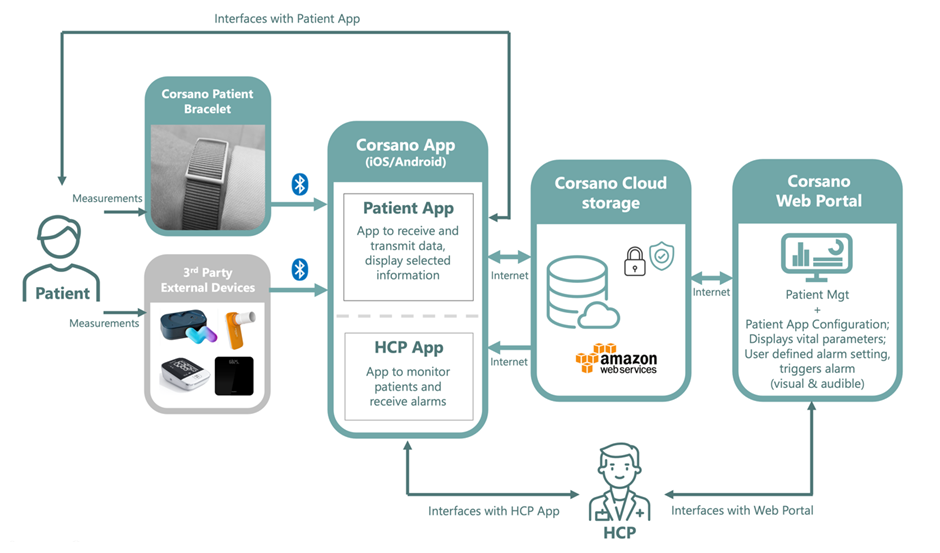Current solutions for remote health monitoring can be seen as invasive by patients and mostly do single variant intermittent tracking. FDA clearance brings one of Europe’s most advanced real-time continuous remote monitoring systems to the US market for the first time.
A patient-friendly multi-sensor bracelet which helps to address some of the key challenges around the adoption of remote patient monitoring systems (RPM) has been given clearance by the United States Food and Drug Administration (FDA).
Corsano Health’s CardioWatch System is an advanced real-time monitoring system, which consists of a bracelet worn by an adult patient (at least 22 years old), a web-based browser, and a mobile app that can operate in either patient or healthcare professional (HCP) mode.
The system collects continuous vital signs data and makes it available to patients, clinicians, healthcare providers and developers for screening, diagnosis, treatment and care, and clinical research applications.
Vital signs that can be monitored include Pulse Rate, Saturation (SpO2), Respiration Rate, Temperature, Activity, Spiro and Lung Function, Blood Pressure, and Weight. Encrypted data is transmitted from the system to a secure health cloud, where it is stored and made available for further analysis, including for AI and ML applications development.
European pedigree
FDA clearance is significant for a system which is already CE-MDR medically certified in Europe. It has played a role in more than 100 clinical trials and research projects, mainly Europe-focused, including the development of cardiovascular, oncology and stress therapies. The results of these trials have been published in medical publications such as The Lancet, Nature, and the European Heart Journal.
"This achievement is a major milestone for Corsano Health in its mission to provide continuous patient monitoring, anytime, anywhere," said CEO Dr Peter Stas.
“We take pride in delivering a proven and reliable digital health system that accelerates clinical trials and generates unparalleled insights to develop life-saving therapies faster.”
According to analyst Straits Research, RPM and the increasing prevalence of chronic conditions are the main drivers of a global patient monitoring market which is growing by 7.3% annually, and will be worth $91.04 billion by 2031. The analyst suggests that RPM’s capacity to lower costs and enhance outcomes is “transforming” healthcare provision in the US.
Reduced overall healthcare costs, fewer hospital readmissions, improved patient mobility, and insights that can be captured in real-time to provide a more streamlined patient experience are also widely seen as potential benefits of RPM implementation.
Meeting the integration challenge
However, integration remains an important challenge for developers and digital health leaders as they seek to enable and realise those benefits. The Corsano CardioWatch System includes an API and Software Development Kit (SDK), which allows providers of RPM platforms and researchers to build interfaces between the device and their own systems.
The system is also integrated with third-party devices for displaying and monitoring physiological signs including spot monitoring of non-invasive blood pressure (NIBP), lung function and spirometry, weight, and continuous monitoring of axillary temperature.
Other challenges for RPM adoption include patient participation in the system and adherence to its use, and the burden of data management and interpretation which new systems can impose on healthcare professionals.
As a highly automated, non-intrusive solution, the CardioWatch System can assist with the creation of personalised treatment plans which help patients to feel more motivated to participate in their own care, improving outcomes and providing a better patient experience.
The bracelet is intended for use in professional healthcare facilities, such as hospitals or skilled nursing facilities, or at home by trained healthcare professionals. For them, the system enables in-house monitoring – for example, notifying them when physiological data falls outside selected parameters while freeing them from manual monitoring tasks.
Find out more at Corsano Health.








